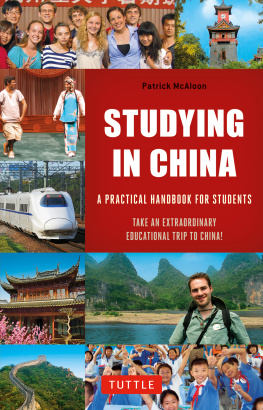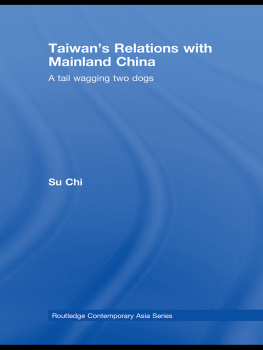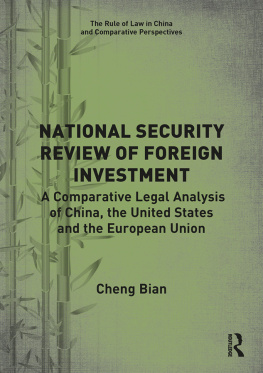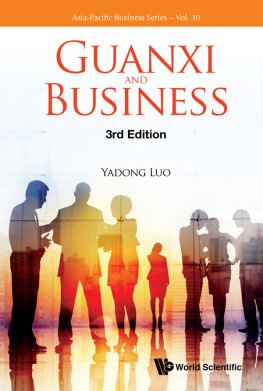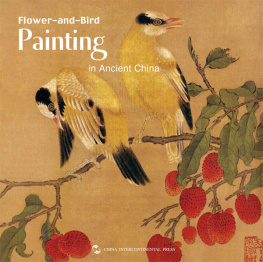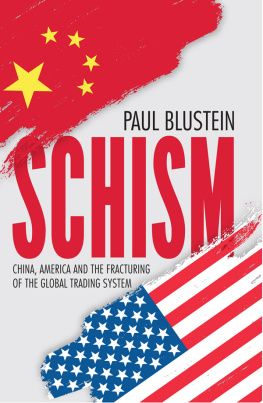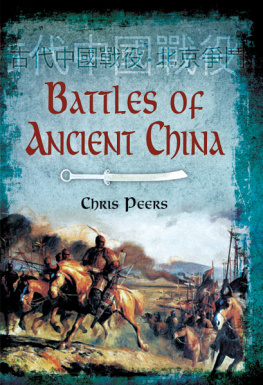Yanjie Bian - Guanxi, How China Works
Here you can read online Yanjie Bian - Guanxi, How China Works full text of the book (entire story) in english for free. Download pdf and epub, get meaning, cover and reviews about this ebook. year: 2019, publisher: John Wiley & Sons, Inc. (Polity Press), genre: Politics. Description of the work, (preface) as well as reviews are available. Best literature library LitArk.com created for fans of good reading and offers a wide selection of genres:
Romance novel
Science fiction
Adventure
Detective
Science
History
Home and family
Prose
Art
Politics
Computer
Non-fiction
Religion
Business
Children
Humor
Choose a favorite category and find really read worthwhile books. Enjoy immersion in the world of imagination, feel the emotions of the characters or learn something new for yourself, make an fascinating discovery.

- Book:Guanxi, How China Works
- Author:
- Publisher:John Wiley & Sons, Inc. (Polity Press)
- Genre:
- Year:2019
- Rating:4 / 5
- Favourites:Add to favourites
- Your mark:
- 80
- 1
- 2
- 3
- 4
- 5
Guanxi, How China Works: summary, description and annotation
We offer to read an annotation, description, summary or preface (depends on what the author of the book "Guanxi, How China Works" wrote himself). If you haven't found the necessary information about the book — write in the comments, we will try to find it.
Guanxi, How China Works — read online for free the complete book (whole text) full work
Below is the text of the book, divided by pages. System saving the place of the last page read, allows you to conveniently read the book "Guanxi, How China Works" online for free, without having to search again every time where you left off. Put a bookmark, and you can go to the page where you finished reading at any time.
Font size:
Interval:
Bookmark:
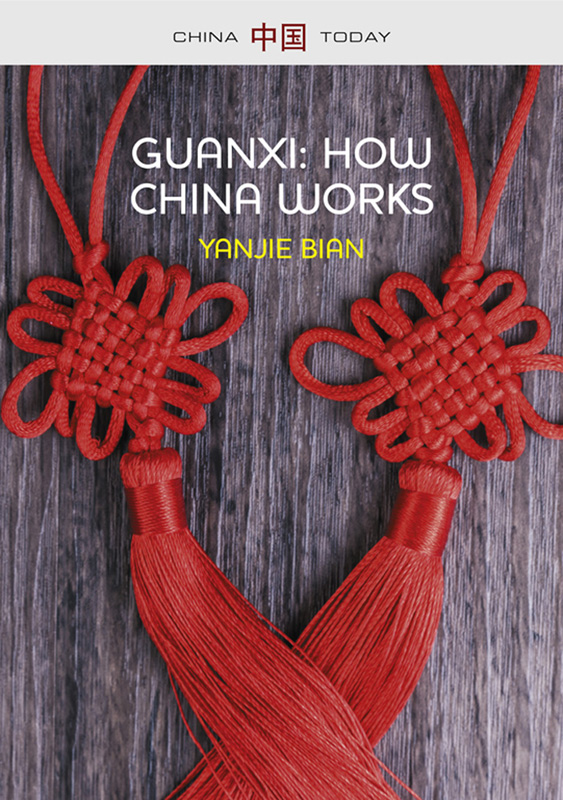
China Today series
Richard P. Appelbaum, Cong Cao, Xueying Han, Rachel Parker & Denis Simon, Innovation in China
Greg Austin, Cyber Policy in China
Yanjie Bian, Guanxi: How China Works
Adam Yuet Chau, Religion in China
Jeroen de Kloet and Anthony Y. H. Fung, Youth Cultures in China
Steven M. Goldstein, China and Taiwan
David S. G. Goodman, Class in Contemporary China
Stuart Harris, China's Foreign Policy
William R. Jankowiak and Robert L. Moore, Family Life in China
Elaine Jeffreys with Haiqing Yu, Sex in China
Michael Keane, Creative Industries in China
Joe C. B. Leung and Yuebin Xu, China's Social Welfare
Hongmei Li, Advertising and Consumer Culture in China
Orna Naftali, Children in China
Eva Pils, Human Rights in China
Pitman B. Potter, China's Legal System
Pun Ngai, Migrant Labor in China
Xuefei Ren, Urban China
Nancy E. Riley, Population in China
Janette Ryan, Education in China
Judith Shapiro, China's Environmental Challenges 2nd edition
Alvin Y. So and Yin-wah Chu, The Global Rise of China
Teresa Wright, Party and State in Post-Mao China
Teresa Wright, Popular Protest in China
Jie Yang, Mental Health in China
You Ji, China's Military Transformation
LiAnne Yu, Consumption in China
Xiaowei Zang, Ethnicity in China
Yanjie Bian
polity
Copyright Yanjie Bian 2019
The right of Yanjie Bian to be identified as Author of this Work has been asserted in accordance with the UK Copyright, Designs and Patents Act 1988.
First published in 2019 by Polity Press
Polity Press
65 Bridge Street
Cambridge CB2 1UR, UK
Polity Press
101 Station Landing
Suite 300
Medford, MA 02155, USA
All rights reserved. Except for the quotation of short passages for the purpose of criticism and review, no part of this publication may be reproduced, stored in a retrieval system or transmitted, in any form or by any means, electronic, mechanical, photocopying, recording or otherwise, without the prior permission of the publisher.
ISBN-13: 978-1-5095-0038-3
ISBN-13: 978-1-5095-0039-0 (pb)
A catalogue record for this book is available from the British Library.
Typeset in 11.5 on 15pt Adobe Jenson Pro by Toppan Best-set Premedia Limited
Printed and bound in Great Britain by CPI Group (UK) Ltd, Croydon
The publisher has used its best endeavours to ensure that the URLs for external websites referred to in this book are correct and active at the time of going to press. However, the publisher has no responsibility for the websites and can make no guarantee that a site will remain live or that the content is or will remain appropriate.
Every effort has been made to trace all copyright holders, but if any have been overlooked the publisher will be pleased to include any necessary credits in any subsequent reprint or edition.
For further information on Polity, visit our website: politybooks.com
To Nan Lin
My Teacher, Doctoral Advisor, and Lifelong Mentor
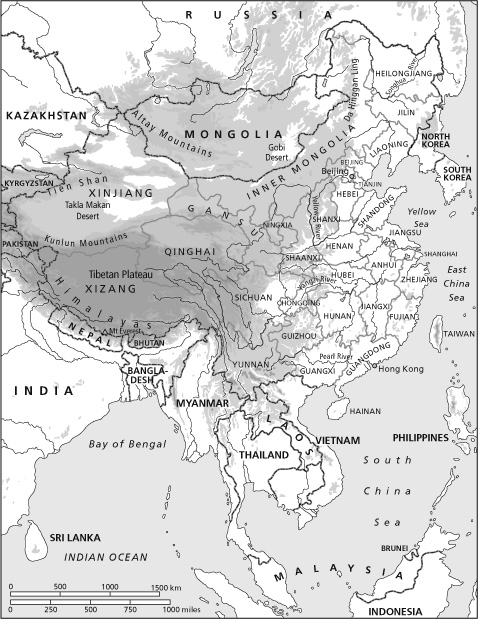
Chronology
| 1894-5 | First Sino-Japanese War |
| 1911 | Fall of the Qing dynasty |
| 1912 | Republic of China established under Sun Yat-sen |
| 1927 | Split between Nationalists (KMT) and Communists (CCP); civil war begins |
| 19345 | CCP under Mao Zedong evades KMT in Long March |
| December 1937 | Nanjing Massacre |
| 193745 | Second Sino-Japanese War |
| 1944 | Publication of The Chinese Concepts of Face by Hsien Chin Hu, with first appearance of notion of guanxi in an English-language publication |
| 19459 | Civil war between KMT and CCP resumes |
| 1947 | Publication of xiangtu zhongguo, whose English translation From the Soil: The Foundations of Chinese Society was published in 1992by Fei Xiaotong, with his theory of the mode of differential associations (, chaxu geju), a social network approach to Chinese social structure |
| 1949 | Publication of (zhongguo wenhua yaoyi, The Essential Meanings of Chinese Culture) by Liang Shuming, theorizing centrality of guanxi in Chinese culture and society |
| October 1949 | KMT retreats to Taiwan; Mao founds People's Republic of China (PRC) |
| 19503 | Korean War |
| 1952 | Abolition of sociology as an academic discipline |
| 19537 | First Five-Year Plan; PRC adopts Soviet-style economic planning |
| 1953 | Publication of Fabric of Chinese Society by Morton Fried, first social science monograph on observational research of guanxi by a social scientist of non-Chinese origin |
| 1954 | First constitution of the PRC and first meeting of the National People's Congress |
| 19567 | Hundred Flowers Movement, a brief period of open political debate |
| 1957 | Anti-Rightist Movement |
| 195860 | Great Leap Forward, an effort to transform China through rapid industrialization and collectivization |
| March 1959 | Tibetan Uprising in Lhasa; Dalai Lama flees to India |
| 195961 | Three Hard Years, widespread famine with tens of millions of deaths |
| 1960 | Sino-Soviet split |
| 1962 | Sino-Indian War |
| October 1964 | First PRC atomic bomb detonation |
| 196676 | Great Proletarian Cultural Revolution; Mao reasserts power |
| February 1972 | President Richard Nixon visits China; Shanghai Communiqu pledges to normalize USChina relations |
| September 1976 | Death of Mao Zedong |
| October 1976 | Ultra-leftist Gang of Four arrested and sentenced |
| December 1978 | Deng Xiaoping assumes power; launches Four Modernizations and economic reforms |
| 1978 | One-child family planning policy introduced |
| 1979 | US and China establish formal diplomatic ties; Deng Xiaoping visits Washington |
| 1979 | PRC sends troops to Vietnam |
| March 1979 | Restoration of sociology as an academic discipline; reestablishment of Chinese Sociological Association |
| February 1981 | Nankai University Class of Sociology opened as year-long course in sociology, with Peter Blau, Fei Xiaotong, and Nan Lin, among others, teaching sociology and social network analysis for first time since restoration of sociology in China |
| 1982 | Census reports PRC population at more than one billion |
| December 1984 | Margaret Thatcher co-signs Sino-British Joint Declaration agreeing to return Hong Kong to China in 1997 |
| 1989 | Tiananmen Square protests culminate in June 4 military crackdown |
Font size:
Interval:
Bookmark:
Similar books «Guanxi, How China Works»
Look at similar books to Guanxi, How China Works. We have selected literature similar in name and meaning in the hope of providing readers with more options to find new, interesting, not yet read works.
Discussion, reviews of the book Guanxi, How China Works and just readers' own opinions. Leave your comments, write what you think about the work, its meaning or the main characters. Specify what exactly you liked and what you didn't like, and why you think so.

